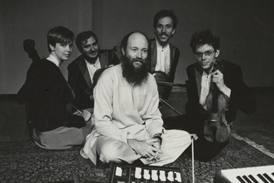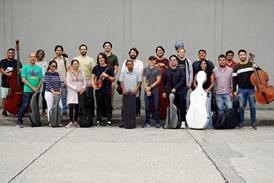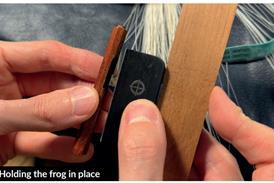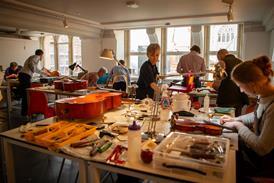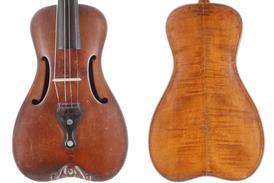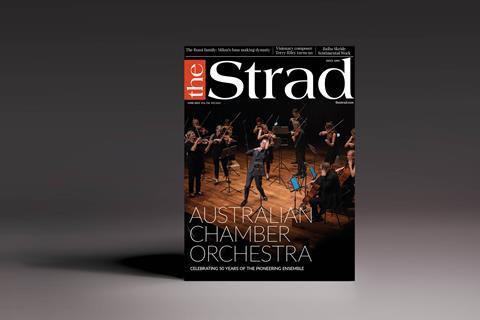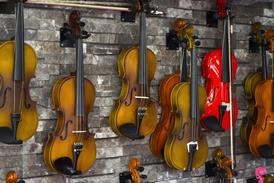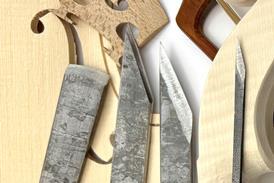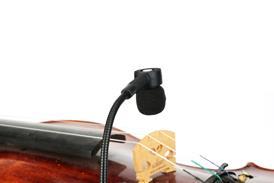Lutherie – Page 2
-
 Premium ❘ Feature
Premium ❘ FeatureViolin maker Antonio Bagatella: First among equals
Despite few of his violins surviving today, Antonio Bagatella is important in violin history for writing one of the first treatises on instrument design. Christian Pabst examines his work and shows how his methods stand up to scrutiny
-
 Premium ❘ Feature
Premium ❘ FeatureTrade Secrets: Varnish retouch
A method for layering pigments and shellac to reproduce the exact colour and thickness of an instrument’s varnish
-
 Premium ❘ Feature
Premium ❘ FeatureMaking Matters: Using various technologies for restoration
Luthier Giovanni Lazzaro recalls the extensive restoration of an 1876 cello by Raffaele Fiorini which required the use of a number of different technologies
-
 Premium ❘ Feature
Premium ❘ FeatureIn Focus: An 1893 violin by Alexander Smillie
David Rattray presents a late 19th-century violin by the Scottish maker
-
 Premium ❘ Feature
Premium ❘ FeatureMy Space: Camille Dolibeau’s Amsterdam workshop
The maker presents her workshop in the bustling capital
-
 Premium ❘ Feature
Premium ❘ FeatureBow maker James Tubbs: London Calling
The British bow maker James Tubbs was born 190 years ago this month. John Basford looks back at his life, work and legacy to the bow making community
-
 Premium ❘ Feature
Premium ❘ FeatureMaking Matters: ‘Cryo-treatment’ of violin wood
What effect would subjecting spruce and maple to ultra-low temperatures have on their sound quality? Oliver Radke presents the results of an informal study into the ‘cryo-treatment’ of violin wood
-
 Premium ❘ Feature
Premium ❘ FeatureTrade Secrets: The ‘Doratura Cremonese’ ground method
How to make and apply a ground coat with a deep golden yellow colour
-
 Premium ❘ Feature
Premium ❘ FeatureDance of the swans: the bows of Charles Nicolas Bazin
The Tourte-model bows by Charles Nicolas Bazin represent the pinnacle of elegance and refinement in the history of French bow making. To celebrate the 150th anniversary of the swan-head model, Richard Morency examines some of the finest examples
-
 Premium ❘ Feature
Premium ❘ FeatureIn Focus: 1877 double bass by Gand & Bernardel
René Zaal examines the Parisian violin making house’s 19th-century bass
-
 Premium ❘ Feature
Premium ❘ FeatureMy Space: Russell Stowe’s Woodbridge workshop
The maker presents his Suffolk atelier
-
 Premium ❘ Feature
Premium ❘ Feature‘Master of the violin, artist of the soul’: Władysław Baczyński
Władysław Baczyński overcame a life of tragedy to become one of Poland’s most highly regarded 20th-century violin makers. Grzegorz Kaproń tells his story
-
 Premium ❘ Feature
Premium ❘ FeatureMaking Matters: Strategies to fix wolf notes
Eliminating a wolf note can be the bane of every luthier’s life. Linda Lespets passes on four methods that can help to solve the problem
-
 Premium ❘ Feature
Premium ❘ FeatureMy Space: Dínçay Gülenç’s Istanbul workshop
The luthier takes us on a tour of his Turkish workshop
-
 Premium ❘ Feature
Premium ❘ FeatureTrade Secrets: A new approach to bracing flat-back instruments
This system of ‘responsive bracing’ allows for the natural movement of the wood
-
 Premium ❘ Feature
Premium ❘ FeatureStars of Africa: South African tonewood
Wood physicist Martina Meincken presents the results of a study investigating whether indigenous woods of southern Africa might be suitable for use as tonewood for instruments
-
 Premium ❘ Feature
Premium ❘ FeatureA unique poster: ‘Paderewski, Wendling’ violin – part two
Expert and conservator Balthazar Soulier has curated this month’s poster which, for the first time, features an ‘original composite’ violin: the ‘Paderewski, Wendling’, made by Montagnana and Guarneri ‘del Gesù’. Here he places this unique instrument in context and highlights complementary information to enable a better understanding of the poster ...
-
 Premium ❘ Feature
Premium ❘ FeatureIn Focus: A 1937 violin by Giuseppe Castagnino
Alberto Giordano examines a 20th-century violin by the Chiavari-based luthier
-
 Premium ❘ Focus
Premium ❘ FocusAuction Report January 2025: The nice and the good
Kevin MacDonald finds a wealth of interesting lots at the October sales in London, from fine old Italians to a fiddle by a Cumbrian farmer
-
 Premium ❘ Feature
Premium ❘ Feature‘Through how many hands an instrument has to pass’ - From the archive: December 1904
Felix Herrmann reports on the violin making methods of Markneukirchen, and how the work is divided up among the neighbouring villages







